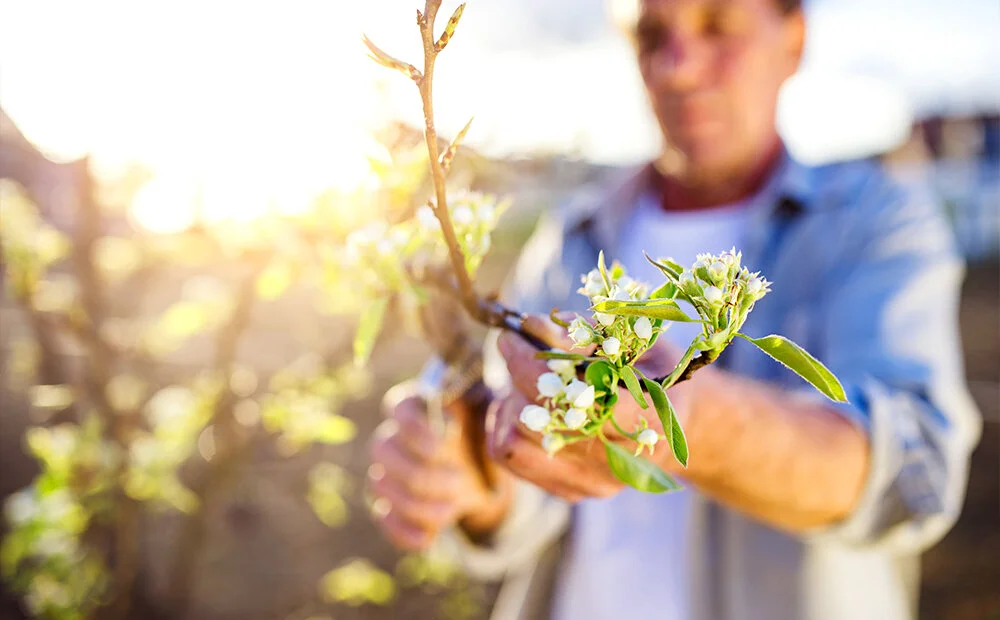SHRUBS AND TREES THAT YOU SHOULD PRUNE IN SPRING
If you’ve got some deciduous trees and shrubs in your landscape, or some broadleaf evergreens like Boxwood, there’s a good chance they might need a little pruning this year. Different species of shrubs and trees need to be pruned at different times of the year to help them thrive, and for many of the specimens in your yard, spring is the perfect time. Keep these key spring pruning guidelines in mind to keep your plants looking healthy and beautiful.
PRUNING FOR GENERAL CLEANUP
First things first, prune away all dead, damaged, or diseased limbs. If your tree or shrub gets damaged in a storm, clean it up as soon as possible. It may not be the ideal time of year, but it will help your tree get back on its feet and start the healing process.
PRUNING FOR BETTER HEALTH
Trees and shrubs that bloom in summer should be pruned in the early spring, and trees and shrubs that flower in spring should be pruned right after they finish blooming. Fruit trees, like apples, cherry, lilac, and plums can also be pruned in the spring. Don’t prune them too aggressively, simply clean them up a bit, and try to open up the center of the tree to let more light and air move through the whole tree. Check for any branches that are growing at odd angles, or rubbing against each other. Branches rubbing together causes an injury and makes the tree more susceptible to disease and pests.
Butterfly bush, beautyberry, spireas, hydrangeas (smooth leaf, Peegee, and panicle varieties), and St. Johns Wort can also be pruned in the spring.
PRUNING FOR STRONGER PLANTS
Vines like Clematis can be pruned back in the spring, remove weak and spindly growth to allow old wood to strengthen. Roses (only shrub types, not climbing types) should also be pruned in spring. Cut back dead or weak growth right to the base. Remove limbs that cross each other and rub. A general rule of thumb is to remove anything thinner than a pencil but never remove more than that. The goal with roses is to create a goblet shape, allowing air and light into the center of the plant. If you want to shape or shorten your rose bush, cut canes back to ¼ inch above an eye. If you’re worried about borers, you can seal the end of each trimmed cane with a dab of basic white glue.
PRUNING FOR DISEASE CONTROL
Spring is also a good time to check your trees for any blight or black knot disease. If your trees have Black Knot, use sterilized pruners and cut the limb off at least 6-8 inches below the knot. Be very careful not to let the knot touch other trees or shrubs, and dispose of it immediately. If you can burn it in your backyard fire pit, do that, or dispose of it in sealed garbage bags. Whatever you do, do not compost it.
WHAT NOT TO PRUNE
There are a few trees that you definitely should NOT prune in spring: Oak trees, Elm trees, Sycamore trees, and Honeylocust trees are particularly susceptible to Oak Wilt, Dutch Elm Disease, Anthracnose, and Stem Cankers, respectively. These species should only be pruned when fully dormant in the winter, and only if pruning is absolutely necessary.
Whether you need tools or advice about what to prune and how to prune it, we’re here to help. You can give us a call or email us for advice or to place an order. We can get your items together and have them ready for curbside pickup or delivery within the Indianapolis area.





